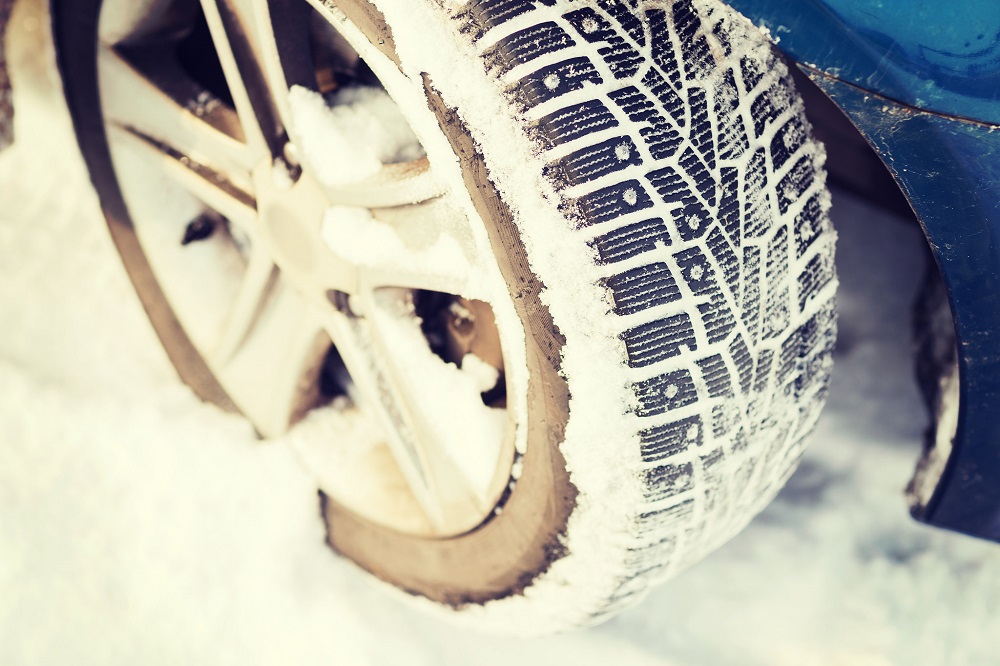To remove ice from tires, use a de-icer spray that is safe for windshield wipers. An ice scraper can also be used to remove ice buildup from tires and wheel wells. To prevent ice buildup on your tires, spray them with a silicone tire treatment. After driving, remove slush buildup in wheel wells to prevent ice from forming. If ice does collect on your tires, do not attempt to remove it using a hammer or mallet, as this may dent or damage your car.
Table of Contents
Freezing temperatures, snow, and ice can damage tires. Cold temperatures cause your tires to lose pressure, increasing wear. Even worse, freezing conditions can cause tires to stiffen and crack, and even puncture. This contributes to blowouts. Summer tires are much more susceptible to this damage than winter tires. This is why it’s important to switch to snow tires as temperatures drop.
The best way to protect your tires from ice is by parking your car inside a heated and protected garage. If this isn’t possible, it’s imperative to take steps to protect your car from snow without a garage. Preventative measures will go a long way to increasing your car’s longevity.
Ice buildup on car tires can cause damage to the rubber. Not only that, but ice buildup on tires and wheel wells reduces traction, hinders the performance of your suspension, and can even restrict your car from turning. Follow these tips for keeping car tires ice-free in order to protect your vehicle from expensive damage.
A high-quality de-icer spray that is safe for windshield wipers is also safe for use on tires.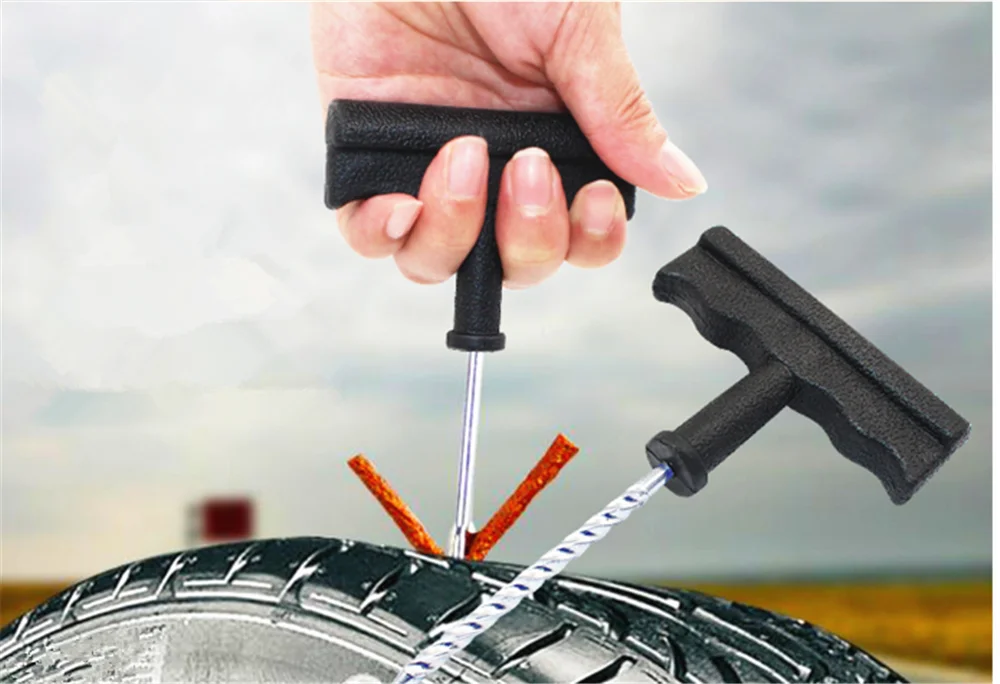 These sprays are designed to melt ice without degrading rubber wiper blades, so they will not damage your tires. If your tires have ice buildup, brush off any snow with an ice scraper equipped with a brush, then thoroughly spray the hard ice buildup with a de-icer.
These sprays are designed to melt ice without degrading rubber wiper blades, so they will not damage your tires. If your tires have ice buildup, brush off any snow with an ice scraper equipped with a brush, then thoroughly spray the hard ice buildup with a de-icer.
Spray the edges of ice buildup where possible, to melt the ice where it is frozen to your tire.
If you can, spray the edges of the ice buildup. This can melt ice where it is fused to your tire and wheel wells, making it easier to remove large pieces of ice.
Fast-Acting Windshield De-Icer
Prestone | Windshield De-Icer
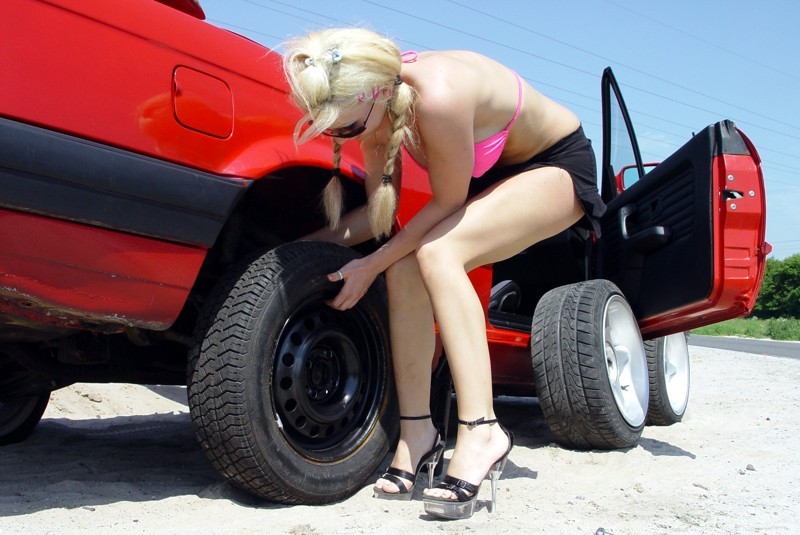
Buy Now
Check Home Depot
We earn a commission if you click this link and make a purchase at no additional cost to you.
This long-handled ice scraper is great for removing heavy ice. The scraper end can be used to scrape and pry large chunks of ice off your tires and wheels. Use the tool carefully to avoid scratching paint and wheels. If you’ve sprayed your tires with de-icer first, a good scraper will easily pop large ice buildup off your tires.
Durable Snow Brush
AstroAI | Snow Brush | Detachable Ice Scraper
Buy Now
Check Home Depot
We earn a commission if you click this link and make a purchase at no additional cost to you.
Make ice easy to remove from your tires by spraying them with this silicone-based tire treatment spray. It works like a no-stick barrier that hinders ice formation. Even if ice does form, it will be much easier to remove when there is a layer of silicone between the ice and your tires.
Silicone is not dissolved or washed away by water, snow, and ice. Plus, it is not harmful to tires. You can spray it on wheels and wheel wells as well, to make removing ice a breeze.
Tire Shine and Protection
Milwaukee Muscle | Black Pearl | Tire Shine | Silicone Spray
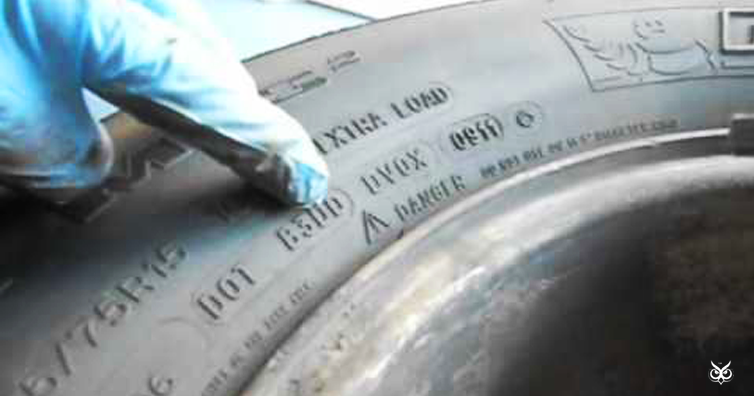
Buy Now
We earn a commission if you click this link and make a purchase at no additional cost to you.
Most of the ice that forms on tires and wheels wells is accumulated by driving through icy slurry on salt roads. This half-melted material clings to your car and freezes solid when you park. To keep this from happening, use the brush end of your ice scraper to clear slushy buildup from tires and wheel wells when you park.
Do not use hammers, mallets, or chisels to remove ice from tires, wheels, and wheel wells. Doing so makes it extremely likely that you dent your car, puncture your wheel wells, or scrape your wheels. One missed hammer blow in icy conditions can put a serious dent in your car. Even worse, you might not see the damage you’ve done to your vehicle until you finally get that stubborn ice to come loose.
To get snow and ice off your tires, employ methods that work without damaging your car. The best way to keep your tires ice free and ready for driving are:
These tips allow you to get stubborn ice and snow off your tires, prevent ice buildup, and keep your car in pristine condition. Winter traction is a must, so make sure you take steps to keep your wheels and tires free of ice buildup.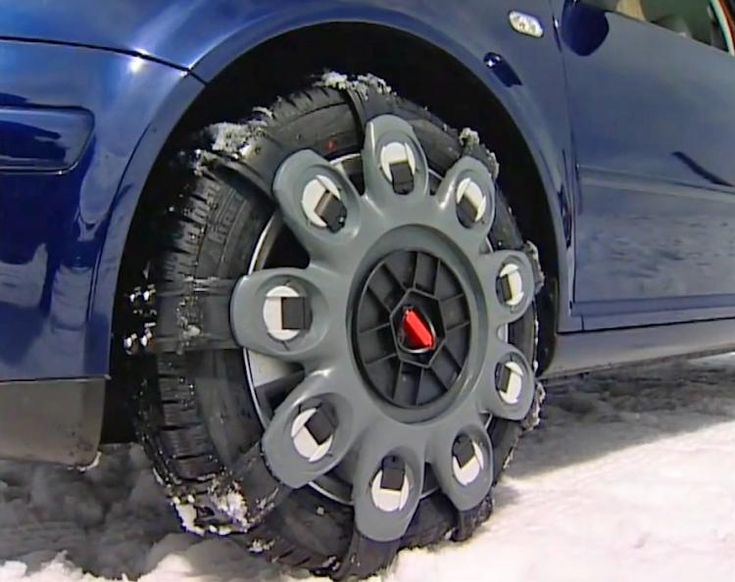
A blizzard is on the way. You’ve stocked up on candles, hot cocoa and batteries. But what if you have to leave the house? Do you know how to get your car out of the snow if you get stuck?
From driving techniques to using props, here are seven ways to get your car moving again, plus some advice about how to prepare for a snowstorm.
There are two key things to do BEFORE the storm arrives to be sure you can get your vehicle back on the road after a big snow. They can make the difference between looking like a genius and having huge hassles.
If you live somewhere where storms can bring a foot or two of snow at once, you should definitely be running snow tires, not all-season tires. (Find out how to choose snow tires.) Before the snow starts falling, get your air pressure checked and make sure your tire tread’s in the proper condition.
Not only will this come in handy for you, but you may also be a hero to those who are caught unprepared. (Speaking of preparedness, here’s a winter safety kit checklist of other items to keep in your car so you’re ready for pretty much any winter road condition.)
Both drive wheels will need to have traction for you to get unstuck. These are the front tires on a front-wheel-drive and the rear tires on rear-wheel drive, AWD and 4WD vehicles. Turn off the car’s traction control system (usually with a button somewhere on the dashboard or console).
Start your vehicle, roll down your window and take off your hat or earmuffs so you can hear clearly. Even better, stick your head out the window to watch your front tire. You’ll get the best traction by straightening the wheel, so do this as much as your parking situation allows.
Put your vehicle in the lowest gear. If you’ve got a four-wheel drive SUV or pickup, engage the low-range gearing. Move forward just a bit.
Now slowly back up. Don’t rev the engine. Stop, then put it in forward and apply a little gas. This can tamp down loose snow and maybe give you enough traction to get out.
Listen carefully. If you hear any tire spinning, take your foot off the gas immediately.
If your vehicle didn’t move at all or a tire is spinning, try braking while at the same time that you’re giving a little gas. This should decrease the spinning and transfer some power to that wheel.
If you have a front-wheel-drive and there aren’t curbs or other cars blocking your way, try turning the wheels slightly the other way and see if that gives you more traction.
Don’t try this braking method for more than a few seconds. It can overheat your brakes which can compromise braking until they’ve cooled down.
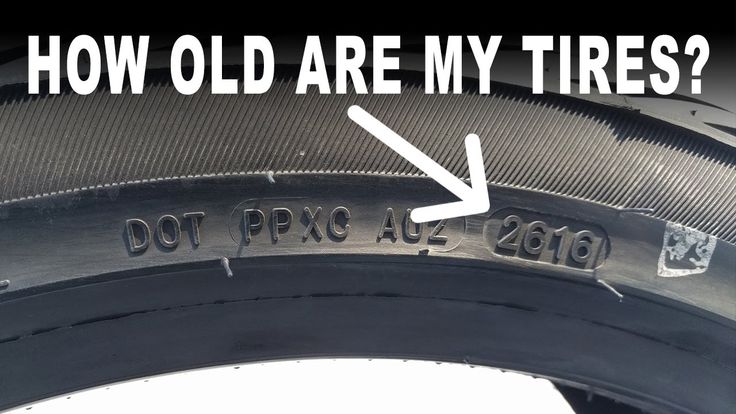 Find Some Muscle
Find Some MuscleSometimes a push from a few Good Samaritans will do the trick. Be 100 percent sure you use only the gear that keeps pushers out of harm’s way (Forward gear only if they're pushing your vehicle from behind.). Ask your helpers to push on the count of three as you gently apply the gas.
If you’re still stuck and you have snow chains, it’s time to chain up. That almost always does the trick.
If you don’t have chains, and your vehicle is moving forward some but then stopping, try “rocking” back and forth between forward and reverse gears. Give it a little gas just as the vehicle starts to swing forward out of reverse. This may give you enough momentum to drive out. But be aware that this kind of rapid shifting can overload your transmission. Only try it a few times or you could end up with expensive damage. It will be much cheaper to just call a tow truck.
 Add Traction with Sand, Kitty Litter or Cardboard
Add Traction with Sand, Kitty Litter or CardboardIf you’re still spinning, you can put something on the ground to add traction that won’t damage your tires. Try sprinkling sand or kitty litter in front of the drive tires (and behind them if you’re planning on backing out).
DON’T EVER USE ANTIFREEZE TO TRY TO MELT SNOW AND ICE. Antifreeze is toxic to children, pets, and wild animals, and it can find its way through storm drains to waterways where it can poison marine animals. Plus, in some states, it’s illegal to pour antifreeze on the ground. Using salt as a deicer is also a bad idea for the environment — and your vehicle. It’s corrosive to metal (like the undercarriage of your car) and becomes less effective below 25 degrees Fahrenheit anyway.
Another way to get traction is to lay cardboard, plywood, two-by-fours or even your vehicle’s floor mats down in front of the drive tires (or behind them if you’re starting in reverse). If you’re in the middle of nowhere, you can use weeds or branches from the side of the road. But caution: Clear the area and go very easy when accelerating. Sometimes the wheels can make whatever you put down for traction shoot out. And be aware your mats could get ruined. Again, it’s probably less out of your pocketbook to get a tow truck.
But caution: Clear the area and go very easy when accelerating. Sometimes the wheels can make whatever you put down for traction shoot out. And be aware your mats could get ruined. Again, it’s probably less out of your pocketbook to get a tow truck.
The last resort is to let a little air out of your tires, just enough so they look visibly lower. Only do this if you have a way to get them quickly refilled someplace close by. Driving on underinflated tires puts more rubber in contact with the ground and will give you better traction for a short distance. But driving this way isn’t safe and it could damage your tires if it’s a long way to the filling station.
If you’re in forward gear, don’t stop right away but drive somewhere you can see there’s less snow and you can safely stop. If you’re in reverse, keep backing up for a few yards, then take your foot off the gas. The snow will stop you. Next, put it in low gear and gently accelerate forward in the tracks you’ve made, just fast enough to break through where you were stuck.
The snow will stop you. Next, put it in low gear and gently accelerate forward in the tracks you’ve made, just fast enough to break through where you were stuck.
Re-engage your traction control system, if you turned it off. If you engaged your low-range 4WD, disengage. Make sure your radiator has air flow. Snow packed into the front of the grille can cause engine overheating.
Go immediately to the closest service station and refill your tires if you let any air out.
If you notice a vibration in your steering wheel, check for snow packed into your wheels. Pull over someplace safe and knock the snow or ice out with an ice scraper or shovel.
Want a complete list of resources for winter driving safety? Here’s our guide for safe driving in winter, from prepping your vehicle to driving in bad conditions.
Important Notice: The information provided above is from a variety of resources deemed reasonably reliable.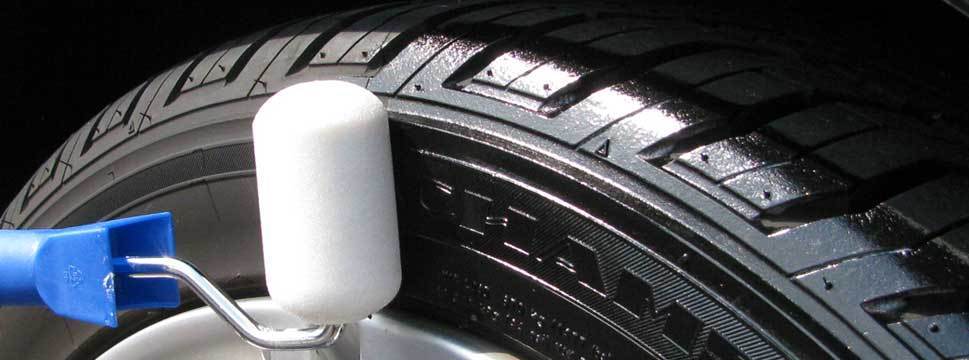 The operation of your vehicle, or the repair or replacement of your vehicle’s equipment, may be different than for a typical vehicle. Please consult your owner’s manual for specific warnings, notices, and other advice relative to the above.
The operation of your vehicle, or the repair or replacement of your vehicle’s equipment, may be different than for a typical vehicle. Please consult your owner’s manual for specific warnings, notices, and other advice relative to the above.
Get More Driving Tips
In winter, the vast majority of Russian motorists face extreme conditions every day. Snow and ice minimize the adhesion of tires to the road surface, which means that you can get stuck in a car anytime and almost everywhere, even in the parking lot near your own house. In this article, we will tell you how to prepare for winter surprises and rescue the iron horse from snow and ice captivity.
So, a typical situation: you "planted" the car in deep snow in winter or you simply cannot move because of the road icing. What to do and how to be?
Assessing the situation
Do not despair.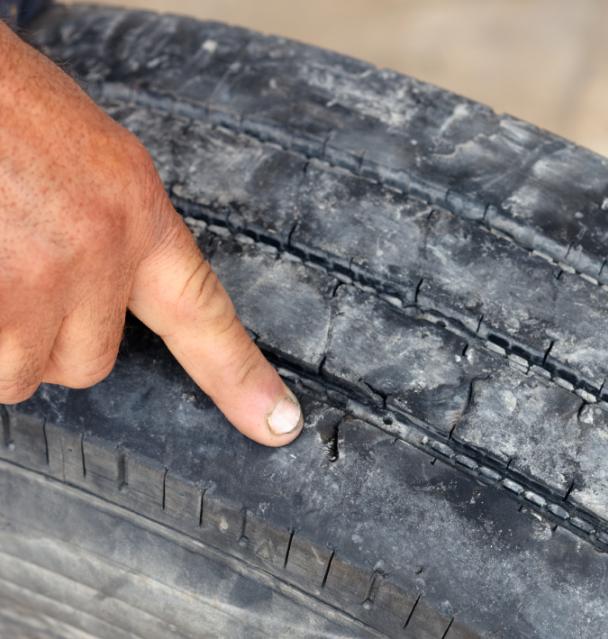 In most cases, this is an ordinary situation that can be dealt with in a few minutes.
In most cases, this is an ordinary situation that can be dealt with in a few minutes.
First of all, evaluate your situation and the prospect of getting out - on your own or with the help of other motorists. If the car is stuck in a city or on a busy road, or near it, you should not worry - even in the most hopeless case, there will always be a “pushing force” in the form of passers-by and other cars nearby. You will definitely be helped. And if so, we use the help of others. And, of course, don't forget to thank you for your service!
It's a completely different matter if the problem overtook you far from civilization, and the nearest "tractor" is a good tens or even hundreds of kilometers away. It's time to think about it here. But first you need to evaluate the fuel reserves: if you skid for a long time, you can quickly burn out all the available fuel, and then the problem will take on a completely different scale.
So, if you feel that the wheels of the car have lost traction and are spinning in place, release the gas pedal and remember if your car has an ESP off button, a forced differential lock or a plug-in all-wheel drive - in the vast majority of cases this is the right decision Problems.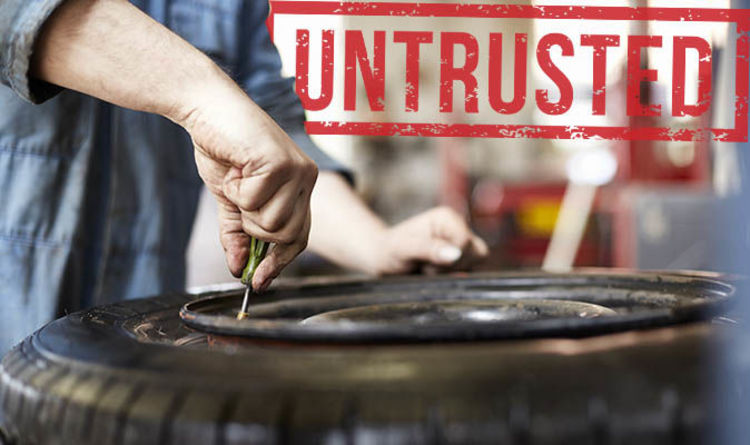 If there is none of the named arsenal, get out of the car and inspect the tires of the drive axle. This is much more productive than continuing to waste the engine, burning fuel and grinding ice, only exacerbating the problem.
If there is none of the named arsenal, get out of the car and inspect the tires of the drive axle. This is much more productive than continuing to waste the engine, burning fuel and grinding ice, only exacerbating the problem.
Getting out without outside help
So, you got out of the car and found that the wheels of the drive axle or one of them dug a groove and are spinning in place, unable to escape from the snow and ice captivity. Look under the car: it's great if the car is not buried, and the bottom or chassis elements do not touch the snowdrifts.
Try to reverse. If you can’t back out, use the so-called “buildup” technique. To do this, alternately squeeze and release the clutch, while gently helping the gas pedal, as if rocking the car back and forth. If you manage to shake the car in this way, at some point it will jump out of the hole on its own. Then it remains only to carefully move on even gas, avoiding slippage, to an area with a good hook.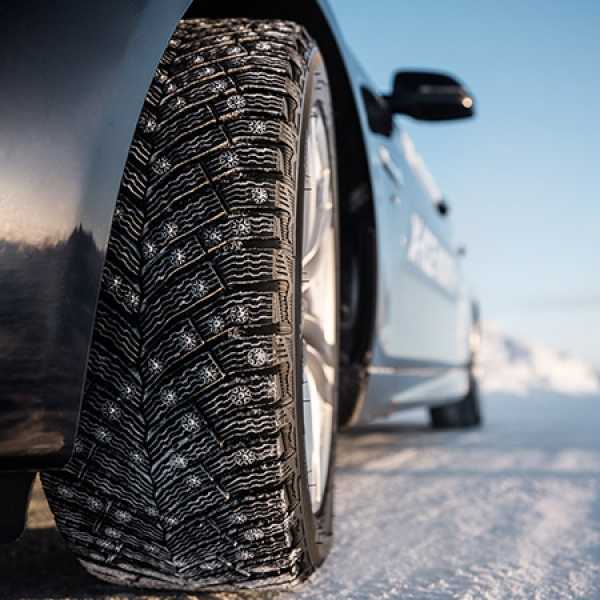
The buildup didn't help - it doesn't matter! In this case, it is necessary to ensure the grip of the spinning wheel in any way possible. Usually only one of them slips, while the second remains motionless. The reason for this is the differential of the car, which renders a disservice. So what to do? Here are just a few of the ways to get out on your own:
- bleed the pressure in the drive wheels
By relieving pressure, you will increase the contact patch of the tire with the coating, which will help you get out of the ice captivity on your own. However, we strongly recommend using this method only if you have a pressure gauge and a compressor. The pressure should not be lowered below 0.8–0.9atm. Otherwise, the wheels may be disassembled. Of course, after rescuing the car, the tire pressure must immediately be raised to normal, otherwise you risk damaging them.
- add sand or place various objects
To rescue the car, you can put branches, boards, rags, salon rugs and other items that increase grip under the slipping wheel.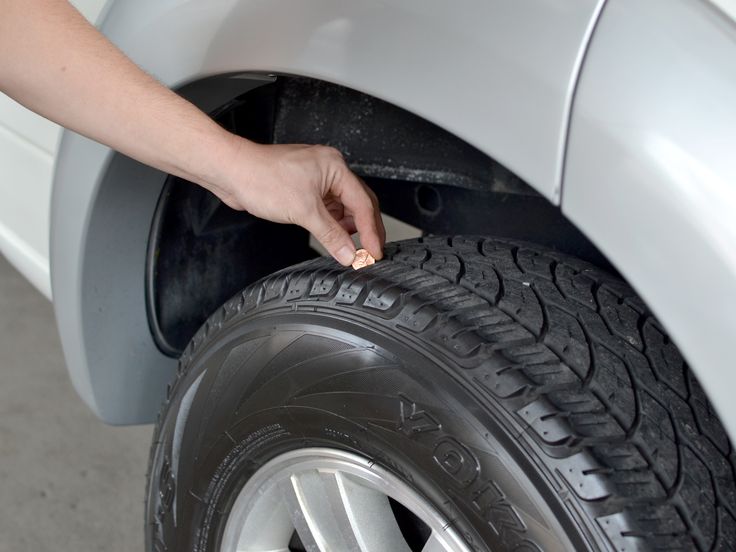 Prudent drivers carry a bag of sand, salt or cat litter with them. Ordinary drinking water, antifreeze or windshield washer fluid will also come in handy - pour them over the ground to melt the ice.
Prudent drivers carry a bag of sand, salt or cat litter with them. Ordinary drinking water, antifreeze or windshield washer fluid will also come in handy - pour them over the ground to melt the ice.
- use sand trucks or chains
Particularly "experienced" motorists stock up with much more powerful tools - sand trucks and snow chains. The first can be rigid, made of metal, or soft, rolled. The first option is preferable, but inconvenient to transport, the second is lighter and more compact, but it also gives less hook. Sand trucks are especially effective in deep loose snow. Thanks to their large surface area, they hold the car and prevent the wheels from sinking. Chains give any car a fantastic cross. Their minus lies in the inconvenience during installation and dismantling. But the advantages of such a device promises considerable.
- use the parking brake
In the case of a rear-wheel drive car, you can apply another trick: simultaneously accelerating and tightening the handbrake, the driver blocks the differential (the slipping wheel is slowed down, the torque is redistributed). However, the technique should be used with caution so as not to burn the pads and not overheat the brake system. For front-wheel drive, the method is not relevant.
However, the technique should be used with caution so as not to burn the pads and not overheat the brake system. For front-wheel drive, the method is not relevant.
- turn the steering wheel in search of a hook
Front-wheel drive uses a different trick: by turning the steering wheel, you can try to find a hook and get out of a difficult situation. This method works especially effectively in combination with buildup.
- to work physically
If none of the above methods help, it is not a sin to work with your hands. This will require a bayonet metal shovel, crowbar or ax. By chipping off the ice and making notches on it, you can significantly increase the grip of the wheels and independently leave the treacherous area.
- push the car yourself
Incredibly, this method often works. If you're physically strong and don't mind stretching, put the transmission in neutral, get out of the car and rock it with your hands.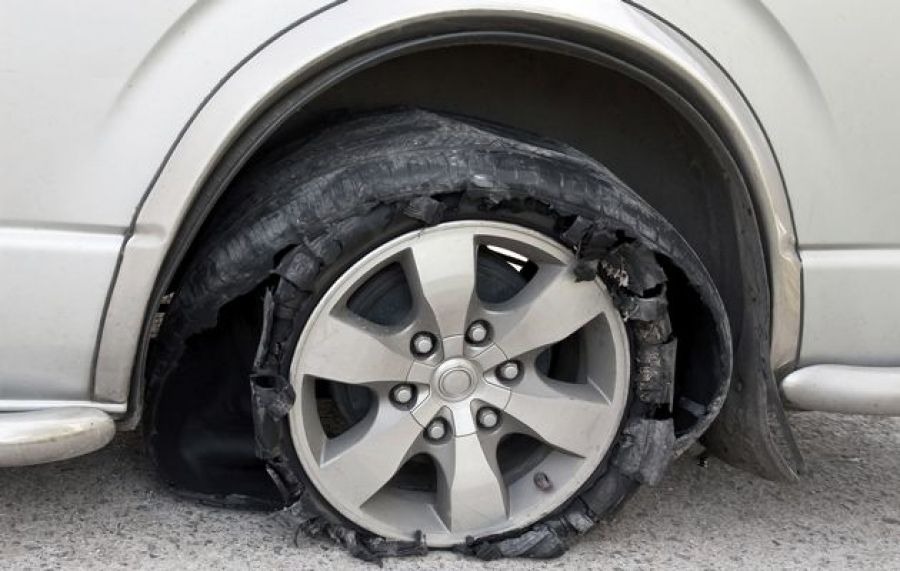 Sometimes it is enough to move the car a dozen centimeters so that it goes further on its own.
Sometimes it is enough to move the car a dozen centimeters so that it goes further on its own.
Extremely desperate people in cars with automatic transmission leave the gearbox in gear, get out and push the skidding car, and then jump into it on the go. We categorically do not recommend doing this: firstly, you may simply not have time to jump in and slow down, and secondly, the automatic door lock may work - in this case, the car will not only leave in an unknown direction, but also deprive you of the opportunity to open it ( unless, of course, you have a spare set of keys with you).
— use the Archimedean lever
In case of a difficult situation and if there is a cable in the car, you yourself can work as a tug. This will require a fulcrum in the form of a pole, tree or a special anchor driven into the ground. One end of the cable is fixed in the towing eye of the car, and the other is wrapped around the support. Then you need to insert a stick or mount into the loop and start rotating it, thereby reducing the length of the cable - the car will slowly but surely move forward.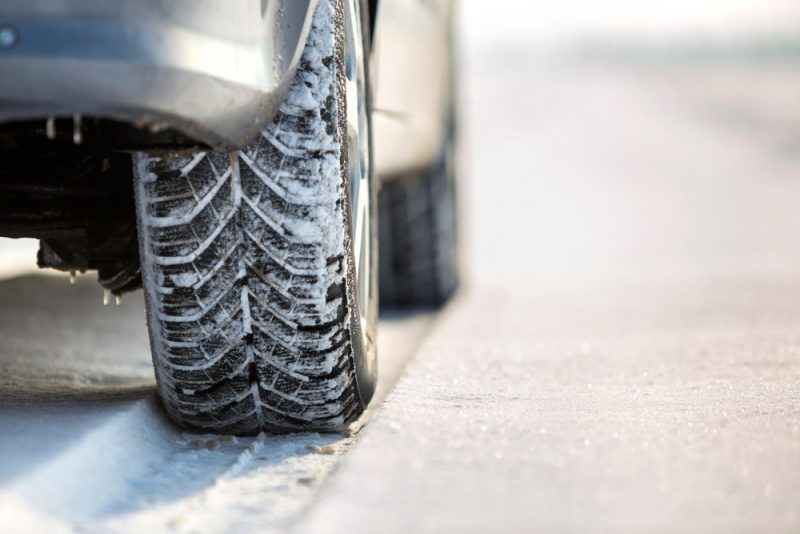 It's even better to have a hand winch with you. Similarly, you can use a cable in combination with a car jack.
It's even better to have a hand winch with you. Similarly, you can use a cable in combination with a car jack.
There are many ways to build an Archimedean lever. Here's another one. We tie one end of the tow rope to the eye of the car. Then, after a meter and a half, we make a wide loop on the cable and tie a reliable knot (the loop should not be tightened under any circumstances). We pass the remaining rope through the loop to make another larger loop. We wrap the end of the rope around a pole, tree, etc. and pass it through a large loop. It turns out a mechanical system that can pull the car out by one person.
— wind the cable around the wheel
Another life hack: if one end of the cable is securely fastened to a tree, post or other reliable support, and the other end is on the wheel so that the cable is wound around it during rotation, the car will take itself out.
— to wait a bit
If you get stuck enough, for lack of or unwillingness to act by the usual methods, you can . .. just calm down and wait. For example, have a snack or read a book while sitting in a warm car. During this time, the ice, melted and polished by the wheel, will get stronger and seize. The grip coefficient of the tire with the surface will improve. Carefully starting off, you will be able to jump out of the ice trap, which previously seemed an insurmountable obstacle.
.. just calm down and wait. For example, have a snack or read a book while sitting in a warm car. During this time, the ice, melted and polished by the wheel, will get stronger and seize. The grip coefficient of the tire with the surface will improve. Carefully starting off, you will be able to jump out of the ice trap, which previously seemed an insurmountable obstacle.
Instead of a conclusion
To feel comfortable in winter conditions, be sure to stock up on at least some of the listed accessories and learn how to use them correctly. The car must certainly have a working jack and a reliable tow rope that will not break during use. A small sapper shovel, a bag of salt or sand will not interfere. If funds allow, get some sand trucks or snow chains, a hand winch, a spare tire and an electric compressor. All this will not take up much space and, combined with ingenuity, will allow you to get out of any, even the most unpleasant winter trap.
see also
How to start a car sleeping outside in the cold
After heavy snowfalls, cars get stuck in the snow, sink into snowdrifts and resemble bear dens.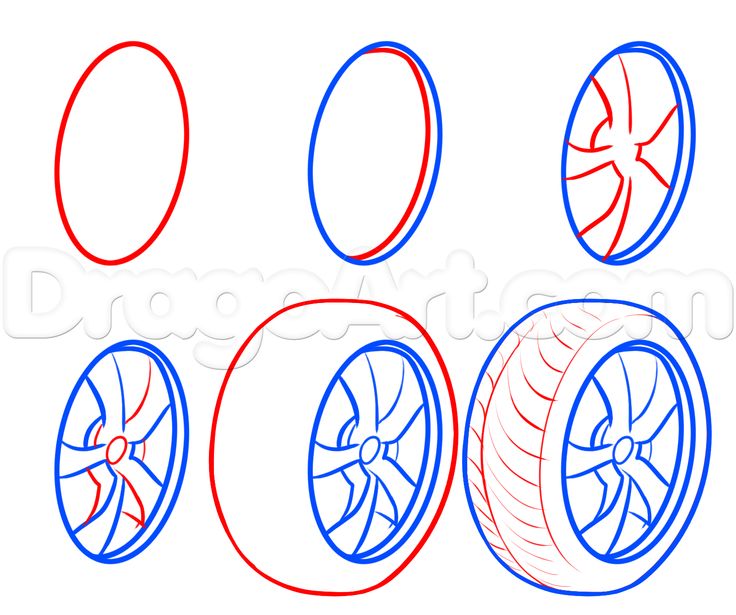 Novosibirsk News decided to recall the traditional methods and folk remedies for uprooting a stuck car from snow captivity.
Novosibirsk News decided to recall the traditional methods and folk remedies for uprooting a stuck car from snow captivity.
The topic “how to get a car out of a snowdrift” is always popular in winter. On Drom.ru, motorists willingly share their advice. First of all, it is recommended to look at the place of slipping. If the ice is still far away, it is worth trying to drive out by gently pressing the gas pedal. "Drowning into the floor" is not advised - this way you can dig even deeper.
Photo: Mikhail Perikov, nsknews.info
Folk remedies are also suitable. The most common way to deal with slipping is to put something dense under the slipping wheel: a rubber mat, a piece of plywood or cardboard, a plastic bottle, or even an ordinary rag.
It is more effective to put a thick and heavy object under the wheel, such as a stick or several bricks.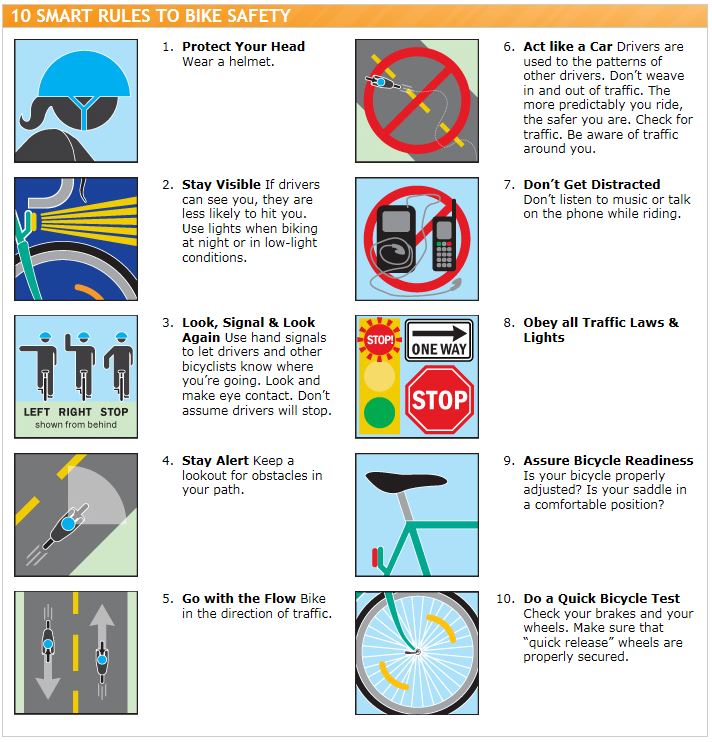 True, the car will not be able to climb them on its own, so the “experienced” advise raising the car on a jack and placing an object directly under the wheel.
True, the car will not be able to climb them on its own, so the “experienced” advise raising the car on a jack and placing an object directly under the wheel.
Seasoned motorists recommend taking a bag of sand or salt with you in winter. Under the influence of salt, the ice at the slipping point will melt, and the car will get out on its own. You can melt the ice without salt: pour the snow near the wheels with an anti-freeze or glass cleaner.
Photo: Mikhail Perikov, nsknews.info
You can try to turn the steering wheel so that the wheels can catch on a dry surface, or even better, rock the car. The meaning of the “exercise” is to force the car to move at least a little bit with gas, while allowing it to roll back. By repeating these steps several times, you will rock the car, and he, due to his own weight, will help the wheels get out. It is better to swing a rear-wheel drive car, including not first, but reverse gear.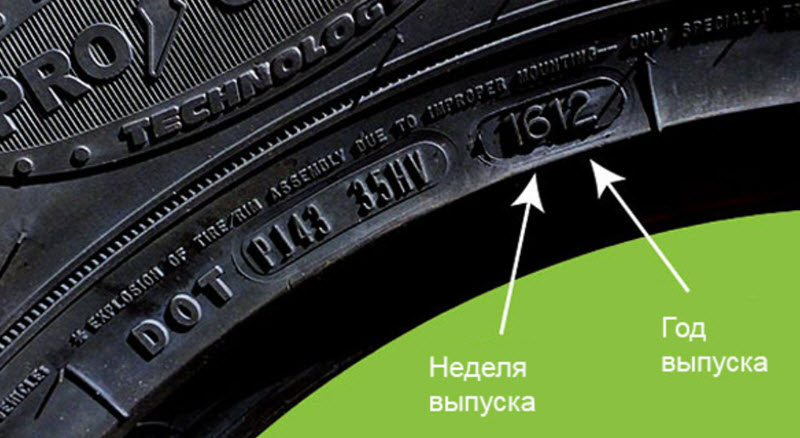
A shovel in winter is our everything. She can not only dig out the snow, but also gouge the ice. Steel sapper shovels are best for this business. Aluminum and plastic are also suitable, they are lighter, but also break more often.
Photo: Rostislav Netisov, nsknews.info
“Better to have two shovels. Classic bayonet and iron Soviet for loose snow. Raking in a parking lot or digging out a garage door is a good big shovel. Stuck in a snowdrift - a bayonet to help, ”recommends motorist Konstantin Ageenkov.
There are simple rope, sewn rag and metal - they are also the most reliable. But the metal cable has one drawback - it does not stretch, softening the jerk: because of this, the tow hook can come off. It is safest to use rope cables, which are a bundle of several thin ropes. Such cables rarely break and stretch very well.
Photo: Mikhail Perikov, nsknews.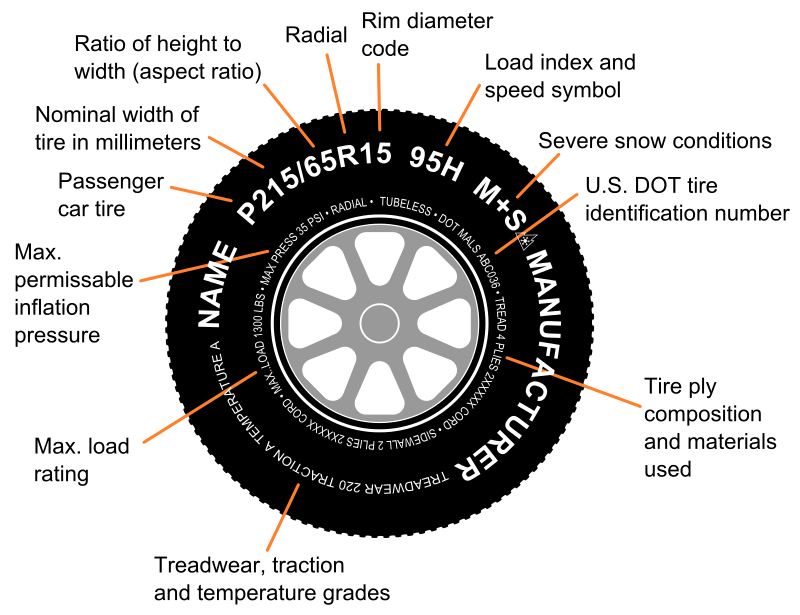 info
info
If money allows, you can get a snow plow. This is such a metal contraption that is attached to the bumper of a car and rakes snow like a scraper. In the AST-54 group on the VKontakte social network, there is a post with a photo of the Niva, the owner of which upgraded his car in a similar way and no longer gets stuck in snowdrifts.
The Novosibirsk military is ready to free civilians from the snow captivity. They say that they have all the equipment for this. In clearing snow blockages, they are ready to offer IMR barrier vehicles, BAT-M track-laying machines, graders, bulldozers, KamAZ trucks and BREM-K repair vehicles.
“If you got stuck a little and didn’t manage to sit on the belly, you can use a special spray, it’s called Nebuksuy. After being treated with this spray, the tires become sticky and cling to ice better.